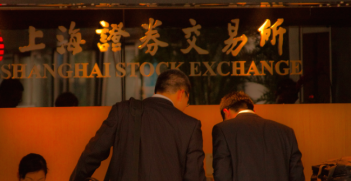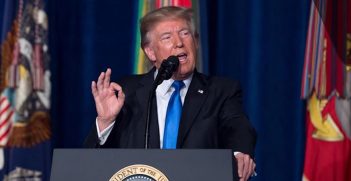BRICS in 2016: Growing Influence

The last year has brought growing influence for BRICS—Brazil, Russia, India, China, and South Africa— as a formal bloc. However, 2016 has also shown that tensions between the group’s members may prove the main obstacle to BRICS continuing success.
On the one hand, they began operating two new multilateral organisations—the New Development Bank (NDB) and the Contingent Reserve Arrangement (CRA)—demonstrating the increasing institutionalisation of their collective grouping. On the other hand, tension and, at times, disunity emerged through competing foreign policy interests.
Jim O’Neill, then Goldman Sachs chief economist, coined the term ‘BRIC’ (referring to Brazil, Russia, India, and China) in 2001. The term identified those emerging economies argued to hold the best potential for growth during the first half of the 21st century—growth translatable into their greater leadership of global affairs.
At first an investment strategy, the term was formalised in 2006, with the BRIC group attempting to break away from and challenge the Global North-led status quo. With the accession of South Africa to the newly named BRICS in 2010, the group now comprises more than 40 per cent of the world’s population and a quarter of the world’s GDP. It represents a significant shift in global power as the five countries announce their commitment to gaining greater voice in the international arena.
Many commentators declared the end of the BRICS with their economic decline in 2016; Russia and Brazil face recessions and a massive withdrawal of global investment—some US$500 billion ($A684 billion) over 2015—and South Africa is predicted to grow at a meagre 0.6 per cent. But such a narrow, economistic view fails to understand what they have become.
They are more than simply an investment market. Their 2016 calendar offers insights into the extent of intra-BRICS activities. From February to December, more than 120 BRICS meetings took place, ranging from the highly publicised 8th BRICS Summit to smaller sessions on urbanisation, foreign policy, financial inclusion, environmental sustainability, trade and health. The BRICS are more than an economic acronym, a point clearly illustrated by the initiation of the NDB and CRA.
Proposed in 2013, the NDB began operating in February 2016. A multilateral development bank with a mandate to “mobilise resources for infrastructure and sustainable development projects in BRICS and other emerging economies and developing countries,” the NDB had an auspicious first year.
Headquartered in Shanghai, with a second regional office—the Africa Regional Centre—recently opened in Johannesburg, 2016 saw the establishment of its operational policies and procedures and the approval of its first loans. Building on the success of US$1.5 billion committed in 2016, it is set to disburse US$2.5 billion in 2017.
With the mainstay of its lending operations directed towards renewable energy projects—with the exception of more old-fashioned road and railway infrastructure projects in Russia—it approved the US$290 million Putian Pinghai Bay Offshore Wind Power Project in China in late November and issued US$450 million in renminbi-denominated ‘green bonds’. Demonstrating a commitment to renewable energy, NDB President KV Kamath expressed the intention to shape the bank into a specialised and “knowledgeable” institution.
The launch of the CRA in October complemented the NDB. While yet to approve its first loans, the CRA—the BRICS equivalent of the International Monetary Fund—is now ready to disburse emergency liquidity to alleviate short-term balance-of-payments pressures.
The institutionalisation of the BRICS reveals their rising global influence. Coupled with the first loans approved by the China-led Asian Infrastructure Investment Bank in June, the emerging economies are altering the landscape of global governance while still engaging with its existing architecture. The successes of 2016, however, need to be tempered by the tensions between the BRICS.
The 8th BRICS Summit held in Goa, India on 15-16 October revealed this tension. Officially, the Goa summit professed the rhetoric of “solidarity”, “cooperation”, and “openness”, with the intent to build a “fair and equitable” multipolar world order. Beyond the official statements, however, informal meetings and press releases revealed uncertainty in their collaborative efforts.
First, Indian Prime Minister Narendra Modi named (without naming) Pakistan “the mothership of terrorism” at the summit. Modi’s statement led to significant backlash from Russia and China, both of which recently manoeuvred towards supporting Islamabad, with China labelling Pakistan its “all-weather ally“. The tension between India and China was compounded earlier in the year when China used its UN Security Council veto to block India’s membership of the Nuclear Suppliers Group.
Second, Brazil’s recent political turmoil has not been warmly received by the BRICS. Following the impeachment of Dilma Rousseff in August, new President Michel Temer rolled-back the BRICS rhetoric of Global South solidarity (a constant theme in Brazilian foreign policy under Presidents Lula da Silva and Rousseff) and towards a stronger relationship with the United States. This led to friction, with the very public snubbing of Temer by Russian President Vladimir Putin at the Goa summit; Putin met privately with all BRICS heads of state except the Brazilian president. Temer’s geopolitical repositioning could also potentially complicate Brazil’s relationship with China, particularly in the wake of American President-elect Trump’s recent challenge to the One China Policy and his ‘unpresidented’ comments on China’s seizing of an American submarine drone.
Despite these concerns, the BRICS group is not disbanding. The institutionalisation reinforces its position of leadership among emerging economies. While recognising their individual concerns (let us not forget the vote of no confidence South African President Jacob Zuma recently survived, the eighth in two years), the BRICS grouping remains intact. This is significant, for in the context of rising nationalism and protectionism in the Global North, the BRICS represent a bastion for globalisation.
With China positioned to host the 9th BRICS Summit in 2017, the grouping may emerge as the leading collective voice in favour of global interconnectedness. China, the unlikely championing of globalisation under the stable guidance of “core leader” President Xi Jinping, is now the leading hope of many to advance globalisation forces towards a more BRICS-enhanced world order.
Dr Adrian Bazbauers is a sessional lecturer in the School of Government & Policy at the University of Canberra.
This article is published under a Creative Commons Licence and may be republished with attribution.





